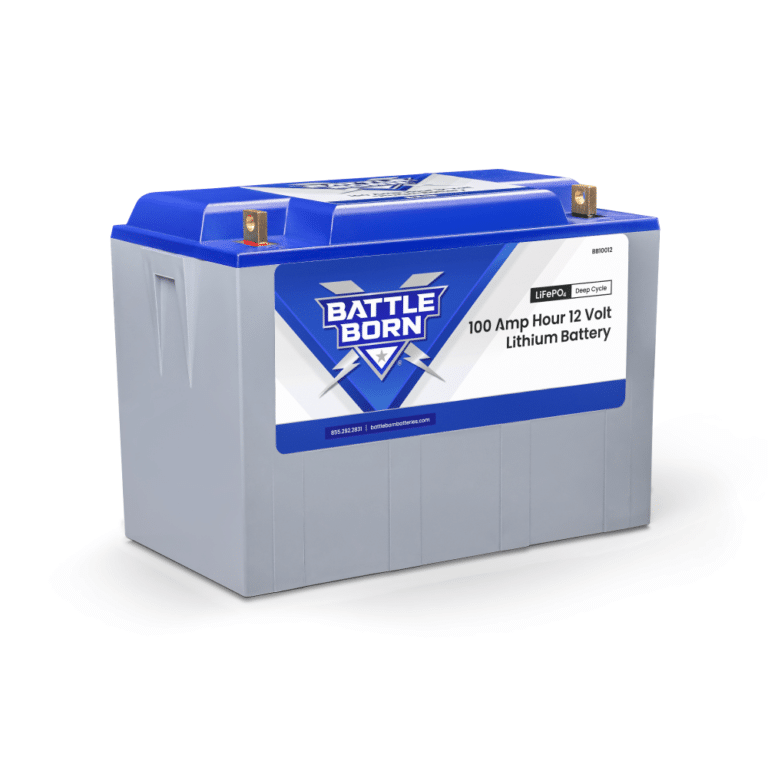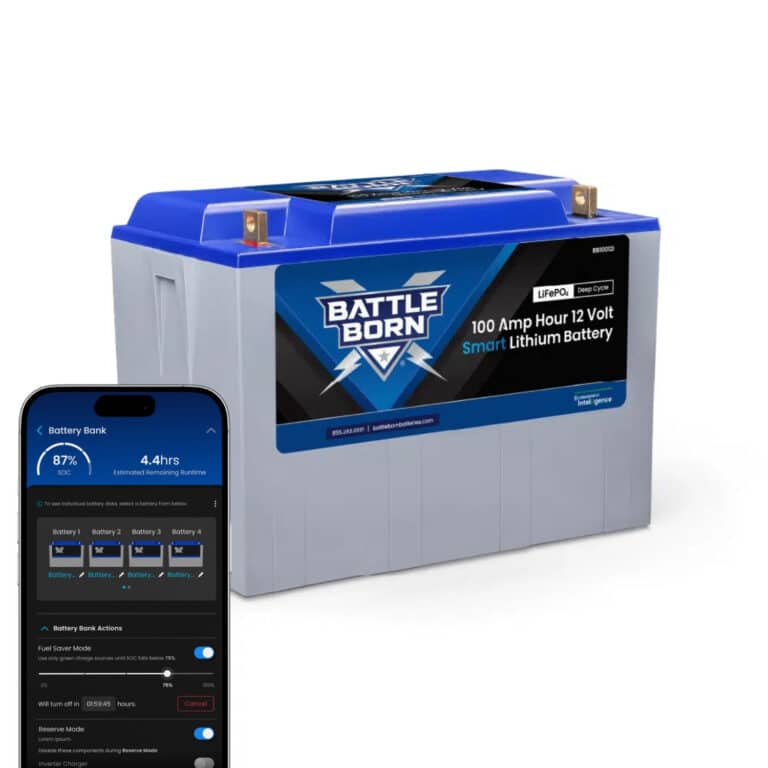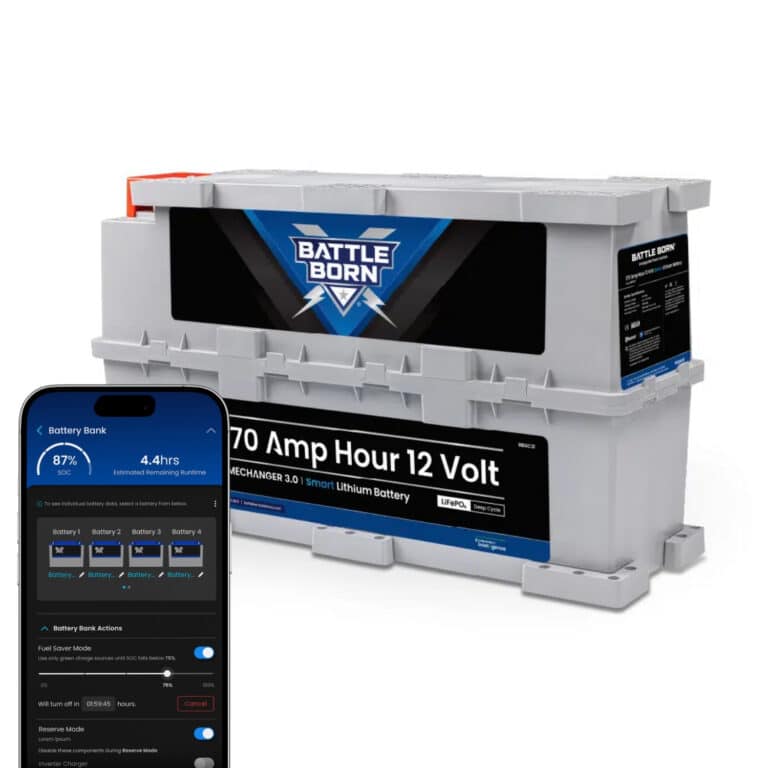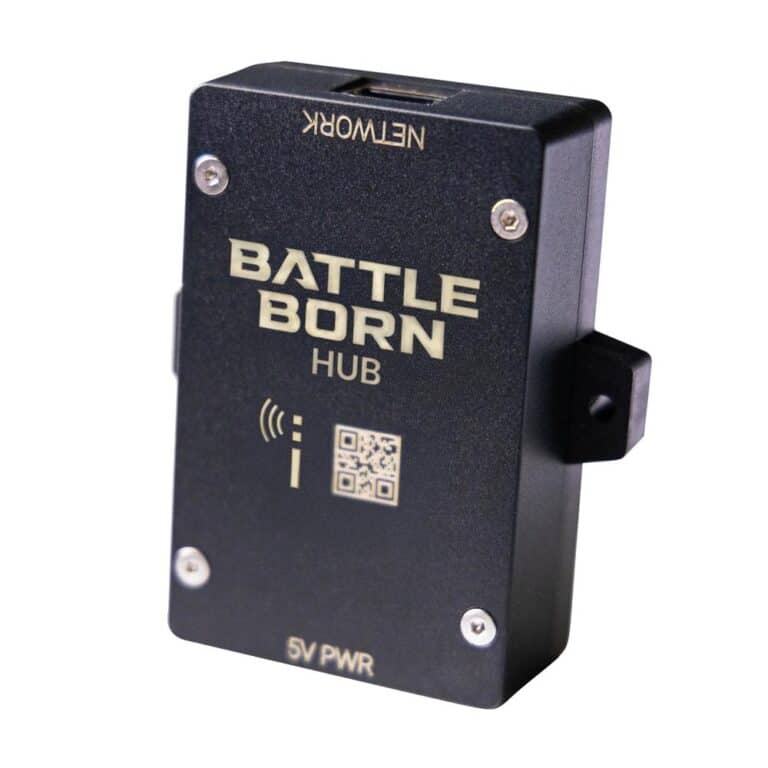
MENUMENU
TALK TO AN EXPERT
Special Hours: 7AM – 6PM PST
TALK TO AN EXPERT
Special Hours: 7AM – 6PM PST
Are you ready to hit the road this summer but worried your lackluster lead acid battery won’t cut it? Now is the perfect time to upgrade to robust and reliable LiFePO4 batteries for your off-grid power system. While lithium batteries and electrical systems can be overwhelming, we’ve curated resources and a team of highly experienced professionals to help simplify the process. The Battle Born Battery Bank Calculator lets you quickly determine how many amp-hours of lithium batteries your power system requires.

This summer, 45 million Americans are planning to hit the road in RVs, according to metrics from the RV Industry Association (RVIA) based on a survey of American leisure travelers. Offering the perfect mix of comfort and convenience while still providing opportunities to connect with nature, RVing is the ideal family vacation. Couple this with the affordability of saving on expensive hotels and restaurant meals; many Americans have fallen in love with RV travel.
As more Americans are hitting the road than ever before, avid RVers are seeing their favorite campgrounds already booked out for the summer. Soaring prices compound the headache this is causing as these campgrounds can’t keep up with the demand. This leaves RVers with limited options as they’re forced to swallow the costs, settle for less-than-ideal camping conditions in overcrowded campgrounds, or cancel their trips. But what if we told you there was another option? What if there was a way to camp with jaw-dropping views, far from crowds and close neighbors, while saving exponential amounts of money on overpriced campgrounds?
Enter boondocking. When RVs are equipped with autonomous power, an ample water supply, and enough resources, RVers can spend days camping off the grid. Otherwise known as ‘boondocking,’ this camping style takes advantage of public lands and is self-sustained without water, electrical, and sewer hookups. With the right power system, boondockers can enjoy all the same luxuries in a campground without the crowds or costs. Although your stock lead acid battery may have been cutting it in the campground, powerful LiFePO4 batteries will give you the power boost to take your adventures to the next level and steer clear of overbooked campgrounds this summer.

Deciding where to start can be overwhelming once you’re ready to upgrade your power. Depending on what you want to power, where you want to go, how long you want to stay there, and specific space constraints, everyone’s ideal power system will be unique to them and their needs. While there isn’t a “one size fits all” approach, we have helpful tips and valuable tools to ensure your new power system is ready for your next adventure.
Before you can choose the size and quantity of lithium-ion batteries you need, understanding the basics of battery sizing terminology is essential.

An ampere, shortened to amp, is a unit of electricity in the International System of Units. Amps represent a unit of constant electrical current. Current is the speed or rate at which the electrons flow through a conductor, represented by the letter “I” in electrical equations. Therefore, “amperage” is the strength of the electrical current in a specific power source.
So, what does “Ah” mean on a battery? We typically use amp-hours (Ah) to express the battery’s power. An amp-hour measures the current (in amps) that flows over an hour and represents the charge in a battery. For example, a 100Ah battery can expend 100 amps of energy in one hour.
Electrical voltage, known as “volts,” is the difference in electrical potential, or the number of electrons, between any two points in an electrical circuit. Volts represent the pressure from a power source that pushes charged electrons (current) through a conducting loop (between two points), enabling them to power something.
Battery voltage is the amount of electrical potential a battery holds, measured in volts. Batteries vary from a few hundredths of a volt to many hundreds of volts, but most household and commonplace batteries are low voltage. Low voltage is anything under 50V (volts) of electricity. Standard low voltages are 12V, 24V, and 48V. Low-voltage wiring doesn’t carry the same current as power outlets. For example, it’s used for doorbells, garage door openers, thermostats, alarm system sensors, audio-visual systems, and our RV LED lighting.
Electrical resistance measures an object’s opposition to the flow of electric current. The universal symbol for this measure of resistance is called “Ohms.” All materials resist the flow of electrical current to some degree — except superconductors, which have zero resistance.
Depending on the electrical component you are trying to power, you may want higher or lower resistance. For example, you might want lower resistance in the wires leading from a battery bank to an inverter. This is because low-voltage DC typically requires thick, short wires to deliver as much power as possible.
Electrical power is measured in watts. One watt is a single unit of power. When we use the term “watt,” we are putting a number on the energy transfer rate. This means that a watt is a unit of power, and power is the rate at which an object produces or consumes energy.
If we think of watts as measuring electrical flow, then any device or appliance needs either a large or a small electrical flow. For example, if you have a 100-watt light bulb and a 60-watt light bulb, the 100-watt bulb needs a larger flow of energy to work.
A watt-hour (Wh) is a unit of energy that measures the capacity of power (in watts) moving over time (an hour). When talking about battery life, this would mean the number of watts an application uses per hour. So, if an appliance is rated at 100W, it uses 100W of power in one hour and 200Wh in two hours. Conversely, if you have five 100W devices running for one hour, they will use 500Wh.
Picture a water hose to illustrate the differences between amps, volts, watts, and ohms and how they relate to an electrical circuit.
Each of these measures of electricity comes together to form essential parts of an electrical circuit. A deep-cycle lithium-ion battery is an electrical circuit that provides power to various essential electronics for off-grid use. These elements work together to provide a specific amount of power for various applications.
To calculate the power of a battery, also known as watts, multiply the battery’s voltage (volts) by its current (amps). This measurement will be important in sizing your system based on the wattage of the electronics you want to power with your batteries. While this may seem like a simple calculation, various nuances, such as how long you plan to run your electronics and how often, can complicate the equation quickly. Luckily, we have a digital battery calculator to help you quickly and accurately size your electrical system.
Choosing the right size of lithium batteries for your power system can be complicated, but you must get it right the first time. If your system lacks enough battery power to keep running, you risk being stranded without power and potentially damaging essential components.
Fortunately, we created a tool to streamline this process and do the calculations for you! The Battle Born Battery Bank Calculator allows you to input your system requirements and expected power loads and receive automatic battery size recommendations.
Start by selecting the application you want to power and then answer a few questions about your current system configuration. These values should be relatively easy to find; you’ll just need to know your service type, the voltage of your system, and whether you plan to use it in cold temperatures.
Next, input your system loads. This will include any electronics you plan to run with your system and the quantity, wattage, and daily run time. Then, hit the calculate button, and your results will show your system’s total kilowatt hours and recommended battery amperage (Ah) for your system. You will also find shoppable links to various batteries that could fit your system. This will allow you to choose the batteries that match your amperage recommendation and fit within your space constraints.
Have more questions? Remember to send your results directly to one of our technical sales specialists for one-on-one assistance in creating your perfect power system. Once you’ve found the ideal batteries for your power system, our team will be happy to help configure additional components, determine solar requirements, and recommend certified dealers and installers.
We know that building or upgrading an electrical system can be overwhelming, so we’re here to help. Our Reno, Nevada-based sales and customer service team is standing by at (855) 292-2831 to answer your questions!
Also, join us on Facebook, Instagram, and YouTube to learn more about how lithium battery systems can power your lifestyle, see how others have built their systems, and gain the confidence to get out there and stay out there.
Shop Best Sellers








Ask a technical specialist now at 855.292.2831
Stay in the Know